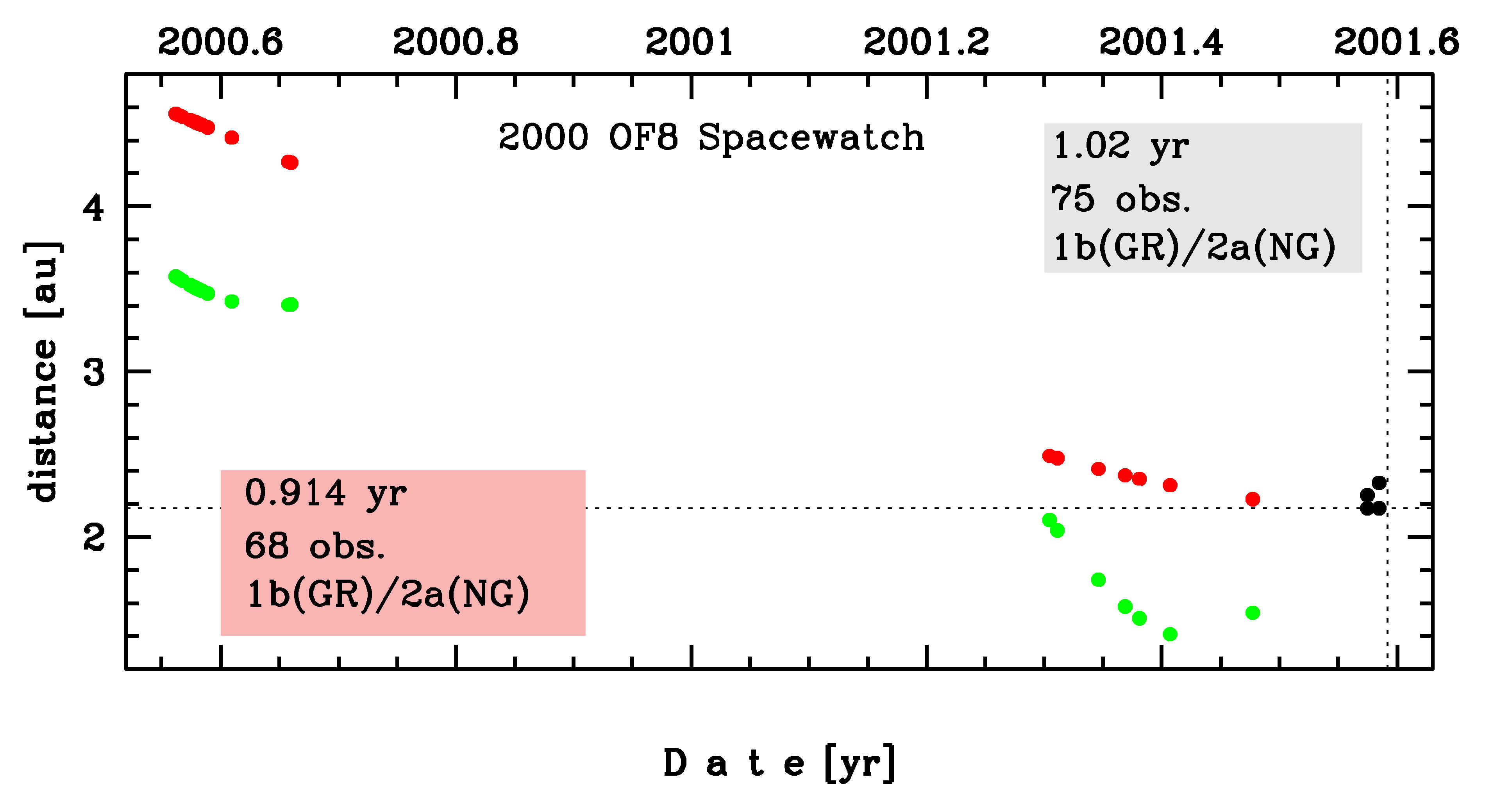C/2000 OF8 Spacewatch
more info
Comet C/2000 OF8 was discovered on 24 July 2000 with Spacewatch Research project (Steward Observatory, Kitt Peak), that is a year before its perihelion passage. It was observed until 1 August 2001.
Preffered solution given here is based on pre-perihelion data spanning over 1.02 yr in a range of heliocentric distances from 4.56 au to 2.17 au.
Comet had its closest approach to the Earth on 4 June 2001 (1.390 au), about 2 months before perihelion passage.
This is Oort spike comet.
See also Sekanina 2019 and Królikowska 2020
Preffered solution given here is based on pre-perihelion data spanning over 1.02 yr in a range of heliocentric distances from 4.56 au to 2.17 au.
Comet had its closest approach to the Earth on 4 June 2001 (1.390 au), about 2 months before perihelion passage.
This is Oort spike comet.
See also Sekanina 2019 and Królikowska 2020
| solution description | ||
|---|---|---|
| number of observations | 68 | |
| data interval | 2000 07 24 – 2001 06 23 | |
| data arc selection | data generally limited to pre-perihelion (PRE) | |
| range of heliocentric distances | 4.56 au – 2.23au | |
| detectability of NG effects in the comet's motion | comet lost close to perihelion or split comet | |
| type of model of motion | GR - gravitational orbit | |
| data weighting | NO | |
| number of residuals | 131 | |
| RMS [arcseconds] | 0.51 | |
| orbit quality class | 1b | |
| previous orbit statistics, both Galactic and stellar perturbations were taken into account | ||
|---|---|---|
| no. of returning VCs in the swarm | 5001 | * |
| no. of escaping VCs in the swarm | 0 | |
| no. of hyperbolas among escaping VCs in the swarm | 0 | |
| previous reciprocal semi-major axis [10-6 au-1] | 36.19 – 42.18 – 43.88 | |
| previous perihelion distance [au] | 140 – 580 – 1200 | |
| previous aphelion distance [103 au] | 45.2 – 46.8 – 54.1 | |
| time interval to previous perihelion [Myr] | 2.5 – 3.1 – 4 | |
| percentage of VCs with qprev < 10 | 9 | |
| percentage of VCs with qprev > 20 | 91 | |
| previous orbit statistics, here only the Galactic tide has been included | ||
|---|---|---|
| no. of returning VCs in the swarm | 5001 | * |
| no. of escaping VCs in the swarm | 0 | |
| no. of hyperbolas among escaping VCs in the swarm | 0 | |
| previous reciprocal semi-major axis [10-6 au-1] | 39.38 – 46.58 – 54.02 | |
| previous perihelion distance [au] | 3.7 – 4.9 – 8.1 | |
| previous aphelion distance [103 au] | 37 – 43 – 51 | |
| time interval to previous perihelion [Myr] | 2.5 – 3.1 – 4 | |
| percentage of VCs with qprev < 10 | 95 | |
| percentage of VCs with 10 < qprev < 20 | 4 | |
| percentage of VCs with qprev > 20 | 1 | |
